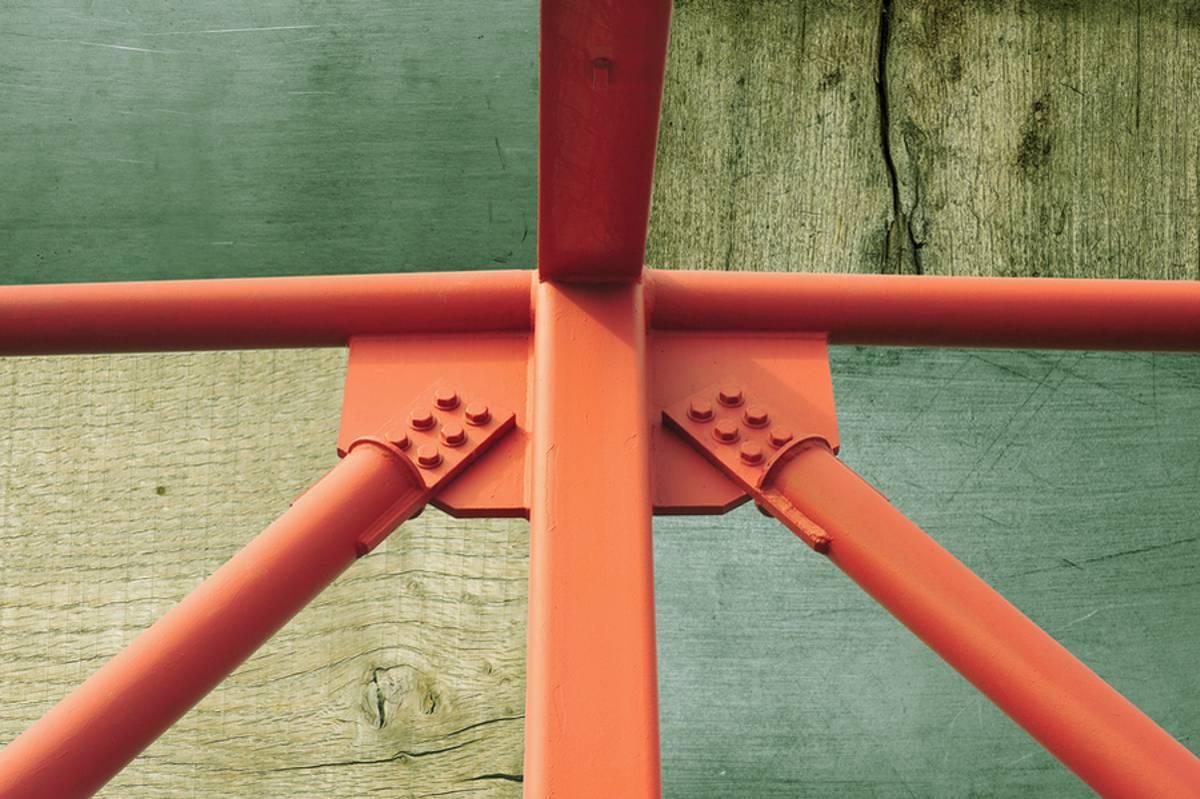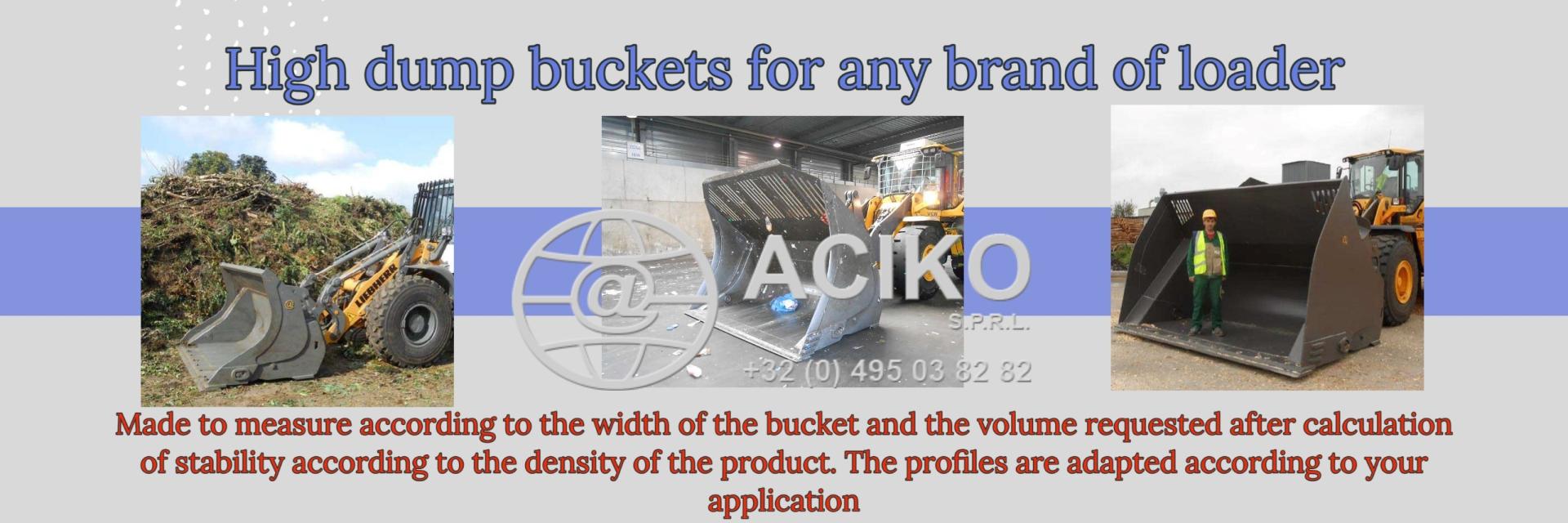MIT study helps builders reduce carbon footprint of truss structures
19/04/22-FR-English-NL-footer
Une étude du MIT aide les constructeurs à réduire l'empreinte carbone des structures en treillis
 A new analysis by MIT researchers could help architects and builders reduce the carbon footprint of truss structures, the crisscrossing struts that bolster bridges, towers, and buildings. Image: MIT News, iStockphoto
A new analysis by MIT researchers could help architects and builders reduce the carbon footprint of truss structures, the crisscrossing struts that bolster bridges, towers, and buildings. Image: MIT News, iStockphoto
Les bâtiments sont un grand contributeur au réchauffement climatique, non seulement dans leurs opérations en cours, mais dans les matériaux utilisés dans leur construction. Les structures en treillis - ces réseaux entrecroisés d'entretoises diagonales utilisées dans la construction moderne, dans tout, des tours d'antenne aux poutres de support pour les grands bâtiments - sont généralement en acier ou en bois ou une combinaison des deux. Mais peu de recherches quantitatives ont été effectuées sur la manière de choisir les bons matériaux pour minimiser la contribution de ces structures au réchauffement climatique.
Le « carbone incorporé » dans un matériau de construction comprend le combustible utilisé dans la production du matériau (pour l'extraction et la fusion de l'acier, par exemple, ou pour l'abattage et la transformation des arbres) et dans le transport des matériaux vers un site. Il comprend également l'équipement utilisé pour la construction elle-même.
Maintenant, les chercheurs du MIT ont effectué une analyse détaillée et créé un ensemble d'outils informatiques pour permettre aux architectes et aux ingénieurs de concevoir des structures en treillis de manière à minimiser leur carbone incorporé tout en conservant toutes les propriétés nécessaires pour une application de construction donnée. Alors qu'en général le bois produit une empreinte carbone beaucoup plus faible, l'utilisation de l'acier dans des endroits où ses propriétés peuvent offrir un maximum d'avantages peut fournir un résultat optimisé, disent-ils.
L'analyse est décrite dans un article publié aujourd'hui dans la revue Engineering Structures, par l'étudiant diplômé Ernest Ching et le professeur adjoint de génie civil et environnemental du MIT Josephine Carstensen.
«La construction est un énorme émetteur de gaz à effet de serre qui a en quelque sorte échappé au radar au cours des dernières décennies», déclare Carstensen. Mais ces dernières années, les concepteurs de bâtiments "commencent à se concentrer davantage sur la manière de réduire non seulement l'énergie de fonctionnement associée à l'utilisation du bâtiment, mais également l'important carbone associé à la structure elle-même". Et c'est là qu'intervient cette nouvelle analyse.
Selon elle, les deux principales options pour réduire les émissions de carbone associées aux structures en treillis consistent à remplacer les matériaux ou à modifier la structure. Cependant, il y a eu "étonnamment peu de travail" sur les outils pour aider les concepteurs à trouver des stratégies de réduction des émissions pour une situation donnée, dit-elle.
Le nouveau système utilise une technique appelée optimisation de la topologie, qui permet la saisie de paramètres de base, tels que la quantité de charge à supporter et les dimensions de la structure, et peut être utilisée pour produire des conceptions optimisées pour différentes caractéristiques, telles que que le poids, le coût ou, dans ce cas, l'impact sur le réchauffement climatique.
Le bois se comporte très bien sous les forces de compression, mais pas aussi bien que l'acier en ce qui concerne la tension, c'est-à-dire une tendance à séparer la structure. Carstensen dit qu'en général, le bois est bien meilleur que l'acier en termes de carbone intégré, donc "surtout si vous avez une structure qui n'a pas de tension, alors vous ne devez absolument utiliser que du bois" afin de minimiser les émissions. Un compromis est que "le poids de la structure va être plus important qu'il ne le serait avec de l'acier", dit-elle.
Les outils qu'ils ont développés, qui ont servi de base à la thèse de maîtrise de Ching, peuvent être appliqués à différentes étapes, soit dans la première phase de planification d'une structure, soit plus tard dans les étapes finales d'une conception.
À titre d'exercice, l'équipe a élaboré une proposition de réingénierie de plusieurs fermes à l'aide de ces outils d'optimisation et a démontré qu'une réduction significative des émissions de gaz à effet de serre incorporées pouvait être réalisée sans perte de performance. Bien qu'ils aient montré qu'il est possible d'obtenir des améliorations d'au moins 10 %, elle dit que ces estimations ne sont « pas exactement des pommes avec des pommes » et que les économies probables pourraient en fait être deux à trois fois supérieures.
"Il s'agit de choisir les matériaux plus intelligemment", dit-elle, pour les spécificités d'une application donnée. Souvent, dans les bâtiments existants, "vous aurez du bois là où il y a de la compression, et là où cela a du sens, puis il y aura des éléments en acier vraiment maigres, en tension, là où cela a du sens. Et c'est aussi ce que nous voyons dans nos solutions de conception qui sont suggérées, mais peut-être pouvons-nous le voir encore plus clairement. Les outils ne sont cependant pas prêts pour une utilisation commerciale, dit-elle, car ils n'ont pas encore ajouté d'interface utilisateur.
Carstensen voit une tendance à l'utilisation croissante du bois dans les grandes constructions, ce qui représente un potentiel important pour réduire les émissions globales de carbone dans le monde. "Il y a un grand intérêt dans l'industrie de la construction pour les structures en bois massif, et cela parle directement dans ce domaine. Donc, l'espoir est que cela ferait des percées dans le secteur de la construction et réduirait en fait cette très grande contribution aux émissions de gaz à effet de serre.
NJC.© Info MIT
----------------------------------------------------------------------------------------------------------------
19/04/22-English
MIT study helps builders reduce carbon footprint of truss structures
 A new analysis by MIT researchers could help architects and builders reduce the carbon footprint of truss structures, the crisscrossing struts that bolster bridges, towers, and buildings. Image: MIT News, iStockphoto
A new analysis by MIT researchers could help architects and builders reduce the carbon footprint of truss structures, the crisscrossing struts that bolster bridges, towers, and buildings. Image: MIT News, iStockphoto
Buildings are a big contributor to global warming, not just in their ongoing operations but in the materials used in their construction. Truss structures — those crisscross arrays of diagonal struts used throughout modern construction, in everything from antenna towers to support beams for large buildings — are typically made of steel or wood or a combination of both. But little quantitative research has been done on how to pick the right materials to minimize these structures’ contribution to global warming.
The “embodied carbon” in a construction material includes the fuel used in the material’s production (for mining and smelting steel, for example, or for felling and processing trees) and in transporting the materials to a site. It also includes the equipment used for the construction itself.
Now, researchers at MIT have done a detailed analysis and created a set of computational tools to enable architects and engineers to design truss structures in a way that can minimize their embodied carbon while maintaining all needed properties for a given building application. While in general wood produces a much lower carbon footprint, using steel in places where its properties can provide maximum benefit can provide an optimized result, they say.
The analysis is described in a paper published today in the journal Engineering Structures, by graduate student Ernest Ching and MIT assistant professor of civil and environmental engineering Josephine Carstensen.
“Construction is a huge greenhouse gas emitter that has kind of been flying under the radar for the past decades,” says Carstensen. But in recent years building designers “are starting to be more focused on how to not just reduce the operating energy associated with building use, but also the important carbon associated with the structure itself.” And that's where this new analysis comes in.
The two main options in reducing the carbon emissions associated with truss structures, she says, are substituting materials or changing the structure. However, there has been “surprisingly little work” on tools to help designers figure out emissions-minimizing strategies for a given situation, she says.
The new system makes use of a technique called topology optimization, which allows for the input of basic parameters, such as the amount of load to be supported and the dimensions of the structure, and can be used to produce designs optimized for different characteristics, such as weight, cost, or, in this case, global warming impact.
Wood performs very well under forces of compression, but not as well as steel when it comes to tension — that is, a tendency to pull the structure apart. Carstensen says that in general, wood is far better than steel in terms of embedded carbon, so “especially if you have a structure that doesn’t have any tension, then you should definitely only use timber” in order to minimize emissions. One tradeoff is that “the weight of the structure is going to be bigger than it would be with steel,” she says.
The tools they developed, which were the basis for Ching's master's thesis, can be applied at different stages, either in the early planning phase of a structure, or later on in the final stages of a design.
As an exercise, the team developed a proposal for reengineering several trusses using these optimization tools, and demonstrated that a significant savings in embodied greenhouse gas emissions could be achieved with no loss of performance. While they have shown improvements of at least 10 percent can be achieved, she says those estimates are “not exactly apples to apples” and likely savings could actually be two to three times that.
“It’s about choosing materials more smartly,” she says, for the specifics of a given application. Often in existing buildings “you will have timber where there’s compression, and where that makes sense, and then it will have really skinny steel members, in tension, where that makes sense. And that’s also what we see in our design solutions that are suggested, but perhaps we can see it even more clearly.” The tools are not ready for commercial use though, she says, because they haven't yet added a user interface.
Carstensen sees a trend to increasing use of timber in large construction, which represents an important potential for reducing the world’s overall carbon emissions. “There’s a big interest in the construction industry in mass timber structures, and this speaks right into that area. So, the hope is that this would make inroads into the construction business and actually make a dent in that very large contribution to greenhouse gas emissions.”
NJC.© info MIT
-------------------------------------------------------------------------------------------------------------------
19/04/22-NL
MIT-studie helpt bouwers de ecologische voetafdruk van truss-constructies te verkleinen
 A new analysis by MIT researchers could help architects and builders reduce the carbon footprint of truss structures, the crisscrossing struts that bolster bridges, towers, and buildings. Image: MIT News, iStockphoto
A new analysis by MIT researchers could help architects and builders reduce the carbon footprint of truss structures, the crisscrossing struts that bolster bridges, towers, and buildings. Image: MIT News, iStockphoto
Gebouwen leveren een grote bijdrage aan de opwarming van de aarde, niet alleen in hun lopende operaties, maar ook in de materialen die bij de constructie worden gebruikt. Truss-structuren - die kriskras reeksen diagonale stijlen die in moderne constructies worden gebruikt, van antennetorens tot steunbalken voor grote gebouwen - zijn meestal gemaakt van staal of hout of een combinatie van beide. Maar er is weinig kwantitatief onderzoek gedaan naar het kiezen van de juiste materialen om de bijdrage van deze structuren aan de opwarming van de aarde te minimaliseren.
De "belichaamde koolstof" in een constructiemateriaal omvat de brandstof die wordt gebruikt bij de productie van het materiaal (bijvoorbeeld voor mijnbouw en het smelten van staal, of voor het kappen en verwerken van bomen) en bij het transporteren van de materialen naar een locatie. Het omvat ook de apparatuur die wordt gebruikt voor de constructie zelf.
Nu hebben onderzoekers van MIT een gedetailleerde analyse gedaan en een reeks rekentools gemaakt waarmee architecten en ingenieurs truss-structuren kunnen ontwerpen op een manier die hun belichaamde koolstof kan minimaliseren, terwijl alle benodigde eigenschappen voor een bepaalde bouwtoepassing behouden blijven. Hoewel hout over het algemeen een veel lagere ecologische voetafdruk heeft, kan het gebruik van staal op plaatsen waar de eigenschappen ervan maximaal kunnen profiteren, een geoptimaliseerd resultaat opleveren, zeggen ze.
De analyse wordt beschreven in een paper dat vandaag is gepubliceerd in het tijdschrift Engineering Structures, door afgestudeerde student Ernest Ching en MIT-assistent-professor civiele en milieutechniek Josephine Carstensen.
"De bouw is een enorme uitstoter van broeikasgassen die de afgelopen decennia min of meer onder de radar heeft gevlogen", zegt Carstensen. Maar de laatste jaren beginnen ontwerpers van gebouwen "zich meer te concentreren op het verminderen van niet alleen de bedrijfsenergie die gepaard gaat met het gebruik van gebouwen, maar ook de belangrijke koolstof die samenhangt met de structuur zelf." En daar komt deze nieuwe analyse om de hoek kijken.
De twee belangrijkste opties om de koolstofemissies van spantconstructies te verminderen, zegt ze, zijn het vervangen van materialen of het veranderen van de constructie. Er is echter "verrassend weinig werk" geweest aan tools om ontwerpers te helpen bij het bedenken van emissiebeperkende strategieën voor een bepaalde situatie, zegt ze.
Het nieuwe systeem maakt gebruik van een techniek genaamd topologie-optimalisatie, waarmee basisparameters kunnen worden ingevoerd, zoals de hoeveelheid te ondersteunen belasting en de afmetingen van de constructie, en kan worden gebruikt om ontwerpen te maken die zijn geoptimaliseerd voor verschillende kenmerken, zoals zoals gewicht, kosten of, in dit geval, de impact van de opwarming van de aarde.
Hout presteert zeer goed onder drukkrachten, maar niet zo goed als staal als het gaat om spanning - dat wil zeggen, de neiging om de structuur uit elkaar te trekken. Carstensen zegt dat hout over het algemeen veel beter is dan staal in termen van ingebed koolstof, dus "vooral als je een structuur hebt die geen spanning heeft, moet je zeker alleen hout gebruiken" om de uitstoot te minimaliseren. Een afweging is dat "het gewicht van de constructie groter zal zijn dan bij staal", zegt ze.
De tools die ze ontwikkelden, die de basis vormden voor de masterproef van Ching, kunnen in verschillende stadia worden toegepast, hetzij in de vroege planningsfase van een constructie, of later in de laatste fasen van een ontwerp.
Als oefening ontwikkelde het team een voorstel voor het opnieuw ontwerpen van verschillende spanten met behulp van deze optimalisatietools, en toonde aan dat een aanzienlijke besparing op de uitstoot van broeikasgassen kon worden bereikt zonder prestatieverlies. Hoewel ze hebben aangetoond dat verbeteringen van ten minste 10 procent kunnen worden bereikt, zegt ze dat die schattingen "niet echt appels op appels" zijn en dat de besparingen waarschijnlijk twee tot drie keer zo hoog kunnen zijn.
"Het gaat om het slimmer kiezen van materialen", zegt ze, voor de specifieke kenmerken van een bepaalde toepassing. Vaak heb je in bestaande gebouwen "hout waar druk is, en waar dat logisch is, en dan zal het heel dunne stalen onderdelen hebben, onder spanning, waar dat logisch is. En dat is ook wat we zien in onze ontwerpoplossingen die worden gesuggereerd, maar misschien kunnen we het nog duidelijker zien.” De tools zijn echter nog niet klaar voor commercieel gebruik, zegt ze, omdat ze nog geen gebruikersinterface hebben toegevoegd.
Carstensen ziet een trend naar een toenemend gebruik van hout in grote constructies, wat een belangrijk potentieel vertegenwoordigt voor het verminderen van de totale CO2-uitstoot in de wereld. "Er is een grote interesse in de bouwsector voor massale houtconstructies, en dit spreekt recht in dat gebied. Dus de hoop is dat dit doordringt in de bouwsector en daadwerkelijk een deuk zal hebben in die zeer grote bijdrage aan de uitstoot van broeikasgassen.”
NJC.© Info MIT
----------------------------------------------------------------------------------------------------------------
Date de dernière mise à jour : 15/04/2022
















